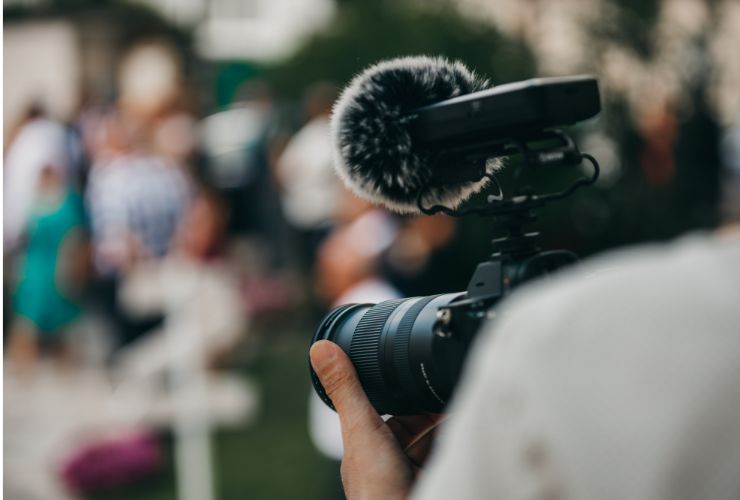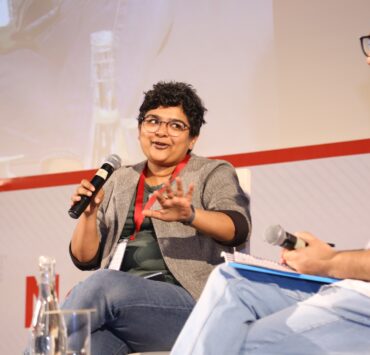
By Aishwarya S Iyer

Dos and Don’ts for Reporters on ground zero covering a tense communal situation like a riot, a lynching, or a gang rape. Most of these are generic reporting guidelines that will be applicable in every ground situation when the story is about the vulnerable.
Understand the Context: Before heading to the ground to tell a story, learn and gather information about the area you’re visiting.
Ways to do this?
a. Read about the nature of crime in the region.
b. Read about the dynamics between communities and the region’s politics.
c. Get a district-wise map of the state, so you’re aware of the neighbouring areas.
d. Once you’ve done that, speak to local activists and journalists who live in that area or have done extensive work there. This will not only help you gather the necessary information and pinpoint locations for your story but also make you aware of the sensitive political climate in the area.
This prep work will benefit you and your reportage in many ways. It will ensure you arrive on the ground organised, equipped, and aware. You’re better positioned to investigate the issues and dig deeper. It also reminds us that just because we’ve come across a story or phenomenon for the first time, it is not necessarily new or exclusive. An example of this would be having context about the existing conflict over religious conversions within the Adivasi community in Madhya Pradesh. With research, once you’re aware that this is an old discord, you’ll be able to report on the incident of anti-Christian violence with perspective of both the discord, the discourse around it and knowledge that it is the latest incident in a string of violent anti-Christian incidents.
Assess and Minimise the Risks: Once you have successfully deciphered the context of the region, move on to assessing the risks. During the reporting, you will have to deal with authorities, the victims, and the accused, any and all of whom may be hostile. Conduct a thorough online search to identify if journalists have previously faced any trouble while working in the area, including cases of attacks, violence, or registration of First Information Reports for their reporting.
Then speak to your local sources to gauge how imminent any of these risks are. (Local sources, especially if they are reporters themselves, should always be credited for their work monetarily and with a byline.) If you do not have local sources, reach out to your activists and human rights network, as well as senior journalists who have reported in the region. When you reach out, it’s good to remember that these new contacts are not obligated to help you and they deserve to know who is calling them with queries, so politely share with them who you are, where you’ve worked, how you got their number. It is not a bad idea to know a bit about their work as well so you can build a sense of familiarity. It is important to listen more and talk less in these meetings or calls as they are the experts on the ground. Value what they say and demonstrate how they can trust you.
If you are new to the area, and are reaching by road, be aware of your surroundings. If you’re travelling with a journalist who is a cameraperson or a photographer, rely on each other’s instincts. If you’re travelling solo, like I do, then be aware, and vigilant. Alone or not, if something feels off, call your editors or the local activists you know and have a chat. Do not let the discomfort linger.
Keep your press cards ready in case anyone asks. Be polite to anyone who stops you. Ask people for directions instead of relying entirely on web mapping platforms. This will help you get comfortable there and you’ll come across as communicative, which is good.
If you have a new driver accompanying you, take a little to get to know them and to let them know why you’re there. For obvious reasons, you need to keep the vehicle as close to you as possible and to ensure that your driver is not nervous and is ready for any developments during the course of your work.
If the reporter belongs to a minority community, is a woman or a trans person, sometimes it is a factor contributing to the risks at times. So, discuss these factors with your editor and the local source before you hit the ground. If there is reason to pause, pause. Successful strategies may involve adhering to a curfew, avoiding solo ventures in specific areas, and bringing along an ally for risky interviews.
As a precaution, the reporter could consider deactivating her/his/ their social media profiles before meeting the interviewees to minimise scrutiny over the reporter’s work and background. It is also good to ask your editor to call you and check in on you to ensure that you are alright.
a. Continuous Location Tracking: Make sure you remain in continuous contact with your editor / senior in the team, and keep them always updated about your stay and travel location. If possible, share continuous location tracking. If you are in a region with little connectivity and your time and resources make it difficult to contact more than one person and you opt to be in touch with your partner/ parents, make sure to put them in contact with your office authority so that your office/ editor receives information about you.
b. Do Not Post on Social Media from Ground Zero: This is particularly important. We are living in an era where tweets often precede fully developed stories. Understand that when you’re writing stories about violence against minorities, the story is bound to be sensitive and will be read by a wide audience. If you post tweets based on only a fraction of what the entire story is then you can be seen as a provocateur during times of escalating tensions. Such behaviour therefore does not align with the ethical standards expected of journalists. Instead, construct a comprehensive narrative that provides readers with the complete picture. Allow your story, not your tweets, to convey the message. You may see or hear disturbing things, and will not have the emotional regulation needed to process it. Do not use social media at these points. Do not post anything that can be inciteful in a developing situation. Continuously posting updates from the field is also risky. It has the potential to compromise not just the story but also your safety and that of the victims/survivors/subjects of your story.

Right of Reply: While this may seem like an obvious practice, it’s astonishing how some reporters and editors allow stories to be published without seeking input from all relevant parties. Not only does this antagonise the side you haven’t sought an opinion from, but it also reflects poorly on your organisation’s editorial ethics.
a. Incorporating all perspectives in your reporting enhances the quality and credibility of your work. Do not succumb to laziness.
b. Understand that we live in an era where failing to obtain a response from all sides could be the difference between your organisation facing a legal complaint or not. While authorities may pursue their chosen course of action, even when everything is editorially vetted, making such a mistake could give them grounds to be hostile toward you.
c. If it’s a breaking story, attempt to contact the relevant individuals through messages, followed by phone calls, and, where possible, via email. If it’s a sensitive story, insist on obtaining a response and wait for it. In the case of a long-form investigation, follow up multiple times to demonstrate that you have diligently pursued all sides of the story. No one should be able to say that you did not try to reach out to all the affected parties.
d. If you haven’t got a response after attempting to contact the party, you should mention this in your story.
e. The quality of the responses in your story will depend on the ease you build with the accused, victims, and authorities. If you are from the majority community, anticipate questions about your political leanings and respond patiently. Similarly, if you’re from a minority community, don’t be caught off guard if there is hostility. Be prepared to handle scepticism gracefully.
f. Listen attentively to the accused and be curious about their perspectives. Do not go into an interview if you feel uncomfortable or find yourself burdened and overwhelmed by the consequences. Pause to reconsider, and call your editors to brainstorm other possible ways to do the interview, and then give it a go once you feel more comfortable. If interviewees appear sceptical or angry, exercise patience.
g. Once you wrap up interviews, thank your subjects for their trust, share your contact information with them, and keep in touch.
While Interviewing People with Trauma: Make sure not to take exact quotes or publish such quotes from victims of any type of violence, where they dictate the specific details of the events. You may do this if the narrated events can be digitally corroborated.
Reporting such specific details from victims or friends / relatives of the victim as is, might often prejudice their case in a court. Remember that victims of trauma might not be able to recollect everything specific details to a reporter and they would not have the psychological and legal support to process those details. Hence act responsibly with the information they share.
Emotional Regulation: Ensure that your thoughts and assumptions do not gain access to your story. Your role as a journalist is to narrate the story effectively. Keep your personal opinions to a minimum while interacting with local journalists, activists, accused, and victims. While you don’t have to agree with everything they say, you don’t have to react or dismiss their viewpoints openly. Understand that your job is to report, not to reform people. Focus on the task at hand and do not let your thoughts cloud your judgement. Although easier said than done, it is important to remember that your primary duty is to provide accurate, fair, and comprehensible information to the public.
Legal Awareness: It is good to have your head office or editor be in touch with a lawyer to deal with any legal complications that may arise from ground zero. Journalists gets increasingly involved in speech offences while reporting from such situations. Be mindful of not providing the law enforcement reasons to implicate you in inciting further disharmony or hurting religious sentiments while you report and publish in a fast-developing situation. Make sure that you do not publish anything that can be used as ground for defamation or can be construed as seditious. Also remember that journalists do not have a legal exception to violate 144 orders that will be in force in such areas.
Aishwarya S Iyer has covered human rights violations with a specific focus on investigating violence against religious minorities, and women, from India’s grassroots. She has nearly nine years of work experience with bylines in NDTV 24/7, The Quint, Scroll.in and CNN International.
Edited by Ammu Joseph, Annie Philip and Nisha Susan. With inputs from Dhanya Rajendran and Leena Gita Reghunath.



